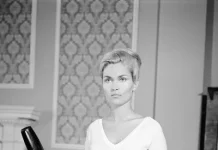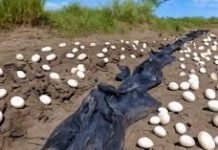The Mesmerizing Sand Sculptures of Andoni Bastarrika
In the vast realm of artistic expression, few mediums capture the imagination quite like sand. For Andoni Bastarrika, this seemingly simple material has become the canvas for his extraordinary creations. While many of us are satisfied with erecting basic sandcastles on the beach, Bastarrika has elevated the art of sand sculpting to an entirely new level, crafting intricate representations of wildlife that captivate and inspire. His journey showcases not only his artistry but also his philosophical approach to life, deeply entwined with nature.

A Journey Begins with a Mermaid
Bastarrika’s journey into the world of sand sculpture began in the summer of 2010, a moment sparked by the joy of spending time with his daughters at the beach. The first sculpture he created was a little mermaid, a whimsical project that allowed him to tap into what he describes as the “fluidity” of his hands. This unexpected connection with sand art ignited a passion that has only grown over the years. “They knew what they were doing,” he shared during an interview, reflecting on how instinctively he connected with the medium. Over the last decade, Bastarrika has dedicated himself to honing his skills, transforming a simple pastime into a profound artistic endeavor.

The Philosophy Behind the Sculptures
What sets Bastarrika apart from many artists is not just his technical ability, but the philosophy he embeds within each creation. He believes that sand teaches us lessons about life, particularly the importance of connections. In his own words, “An unthinkable number of sand particles participate, hugging each other tightly through humidity.” This metaphor extends beyond his art, suggesting that as humans, we should learn to embrace one another just as sand particles do. Each sculpture reflects this connection, making viewers ponder their own relationships and the bonds they forge.

Embracing Nature’s Impermanence
One of the most poignant aspects of Bastarrika’s work is the transient nature of sand sculptures. Once completed, they stand as temporary masterpieces, subject to the whims of nature. The artist acknowledges that their beauty is fleeting, stating that eventually, “the wind will dry them up and release each particle.” This ephemerality serves as a powerful reminder of the beauty and fragility of life itself. By embracing this impermanence, Bastarrika encourages his audience to appreciate the moment and the beauty that surrounds them. His sculptures speak to the notion that beauty does not last forever but is worth cherishing, encapsulating emotional experiences that linger in our memories.
Animal Inspirations
While sand is the medium, the heart of Bastarrika’s work lies in his subjects—animals. He has crafted stunning representations of various creatures, from majestic elephants to intricate depictions of birds of prey. His choice of animals is deeply intentional; he sees them as symbols of freedom and wisdom. “Animals are free spirits,” he explains. “Humans can reflect and learn from them.” Each sculpture acts as a narrative, weaving stories about the beauty of wildlife and urging viewers to understand the delicate balance between humanity and nature. For example, his detailed eagle sculptures not only showcase his skill but invite the audience to reflect on themes of independence and flight.
The Artistic Process: A Dance with Sand
The process of creating these sculptures is as fascinating as the final product. Bastarrika begins by piling up moist sand, allowing his instincts to guide him as he shapes it into forms that express life and motion. A sharpened stick and a feather are his primary tools for detail and nuance, transforming an amorphous mound into a recognizable figure. He sometimes incorporates additional materials like ashes, coal powder, and even colorful stone powders to enhance the visual impact of his creations. This attention to detail reflects not just his technical prowess, but also his commitment to depicting animals authentically, ensuring that each sculpture resonates with the intricacies of the animal kingdom.
The Time Investment in Masterpieces
The time required to complete a sculpture varies significantly based on its size and complexity. For instance, a large elephant sculpture might take around two days, while smaller pieces, such as dogs, may only require six to eight hours. This investment of time showcases not only Bastarrika’s skill but also his unwavering commitment to his art. Each piece is a labor of love, imbued with the essence of the artist’s passion and dedication. It is not uncommon for him to work tirelessly under the sun, further underlining the deep connection he feels with his creations. Each time he steps away from the sculpture to admire it, he acknowledges the labor and love that went into every intricate detail.
Conclusion: More Than Just Sand
Andoni Bastarrika’s sand sculptures transcend mere artistry; they embody a philosophy that resonates with the deeper truths of life and nature. His ability to create stunning, temporary representations of wildlife not only highlights his exceptional talent but also serves as a reminder of the fragility of existence. Through his work, Bastarrika invites us to reflect on our connection with nature, the beauty of life’s impermanence, and the profound lessons that animals can teach us. In a world often dominated by the permanent, Bastarrika’s ephemeral art invites us to embrace the moment and appreciate the beauty that surrounds us, even if it is only for a fleeting time. Ultimately, his sculptures challenge us to celebrate life, in all its temporary glory, and to recognize the significance of each moment spent in the presence of nature.
“`















